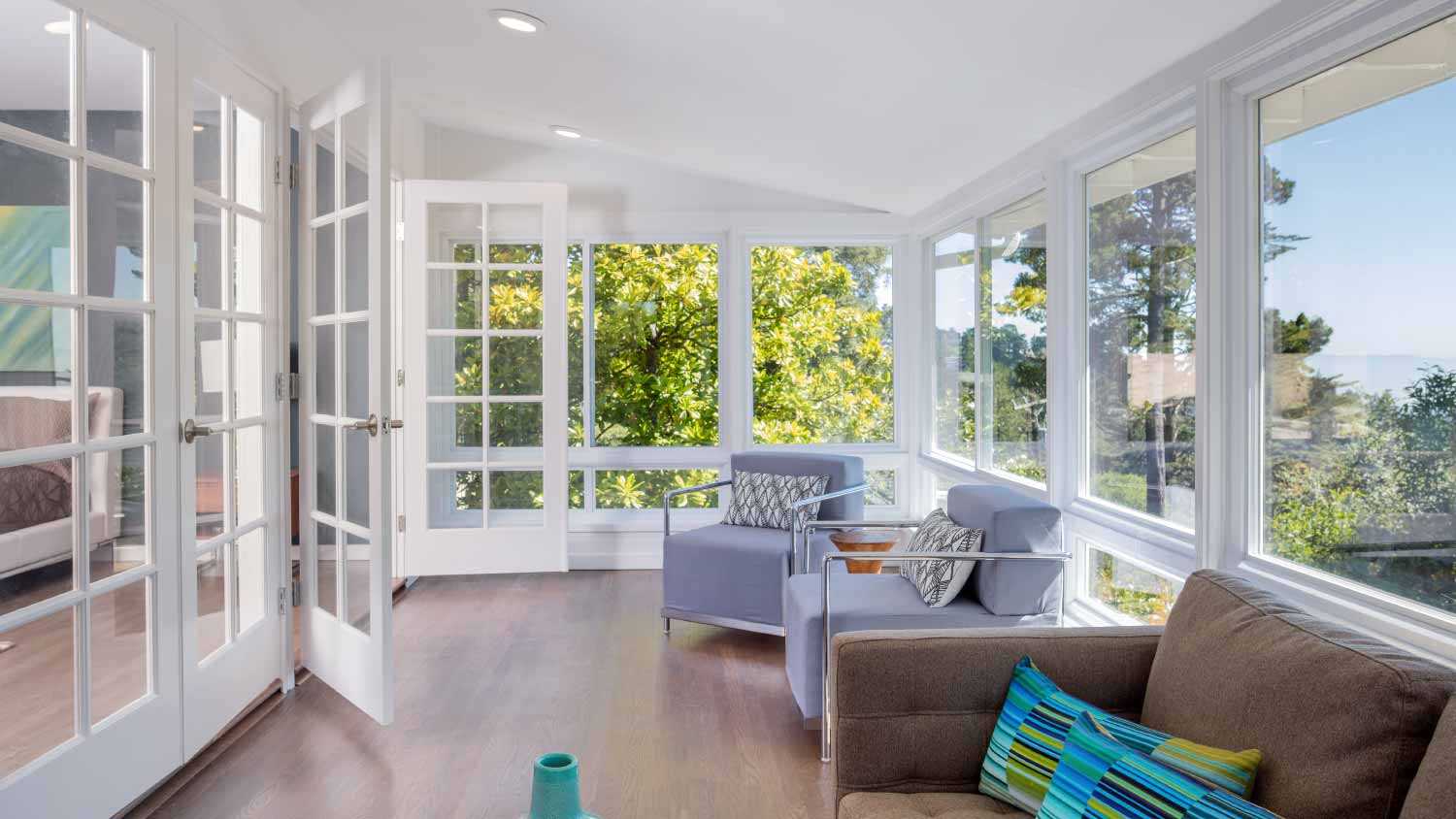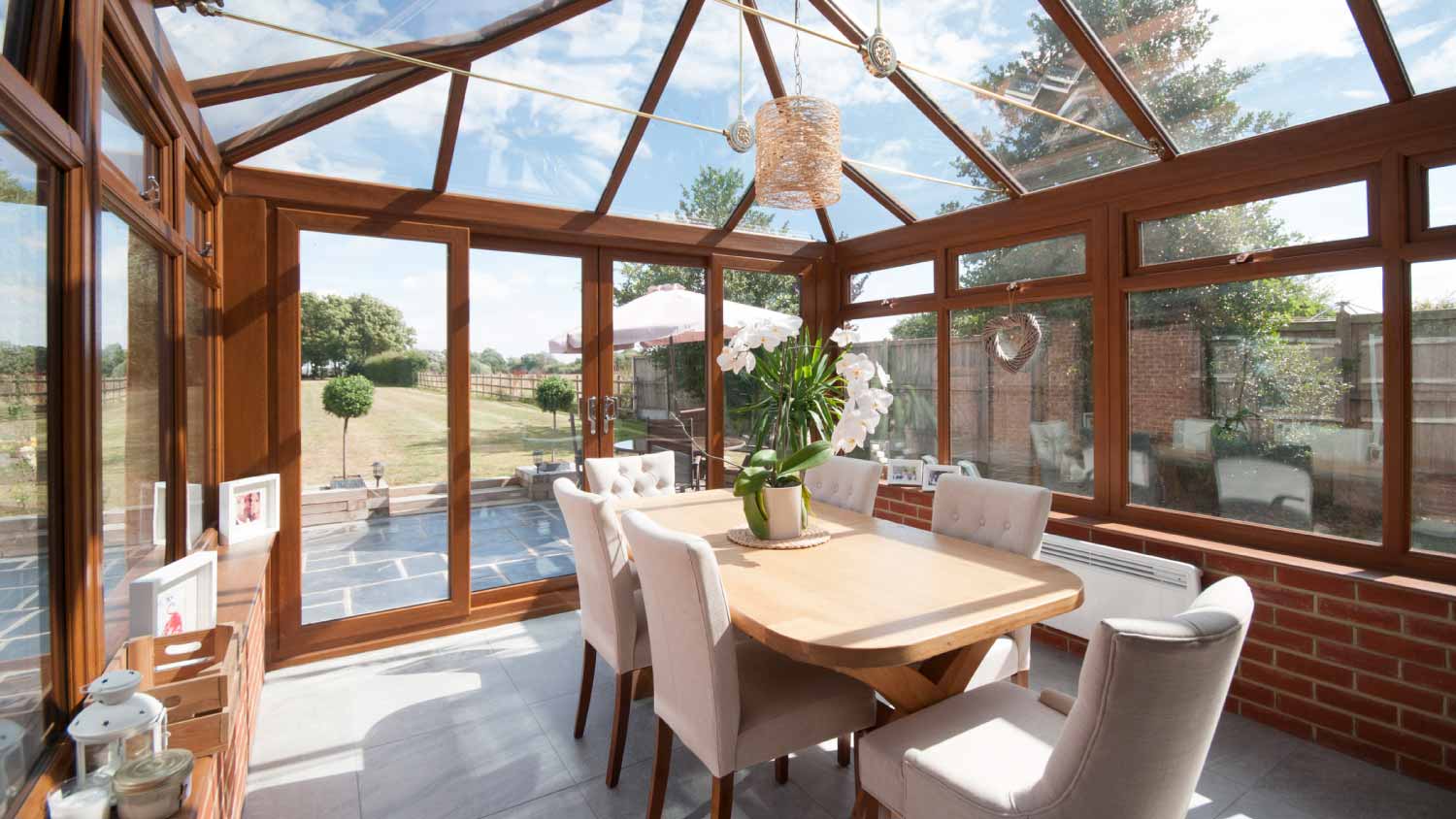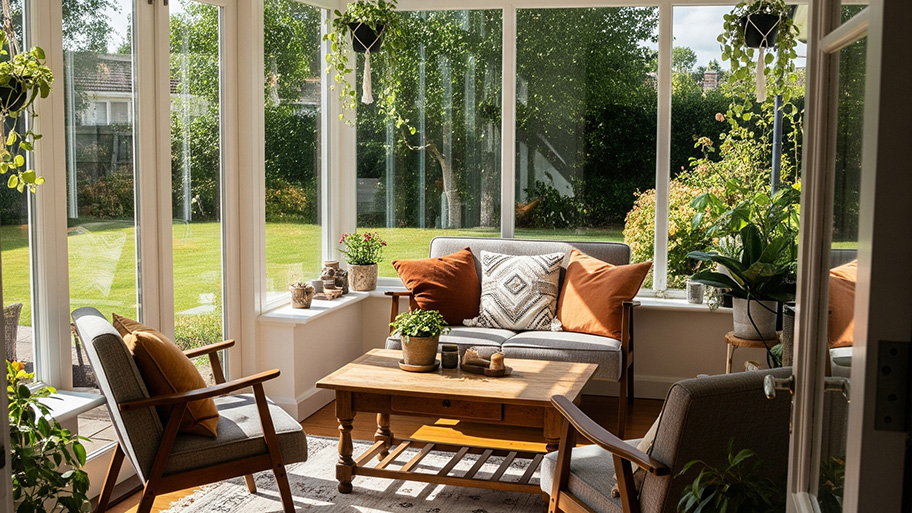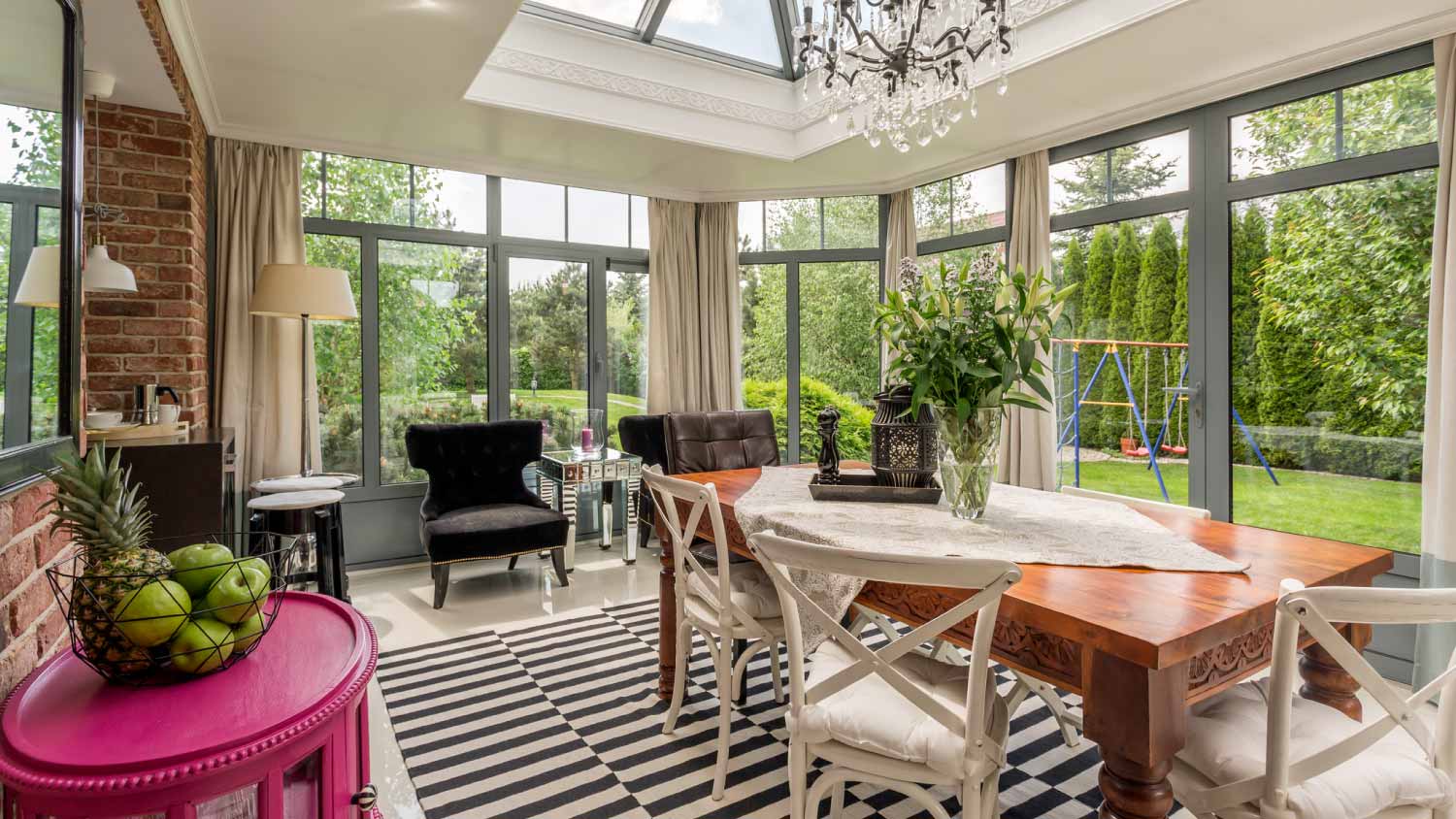
Use our expert guide to figure out how much it costs to install a pool enclosure. Establish your budget, then plan your pool enclosure project.
Explore the possibilities of an expanded living space


The main difference between a sunroom and a room addition is how you use the space.
Certain types of sunrooms cost less than constructing a standard room addition.
ROI can be similar, but some sunroom types add less value than room additions.
Deciding which is best for you comes down to climate, budget, and needs.
Sunrooms and room additions are both fantastic ways to create more functional space in your home. Building one can be a no-brainer if you need extra space or utility, but choosing between the two will depend on your budget, where you live, and how you plan to use the room. Let’s take a look at the difference between a sunroom vs. a room addition to help you decide which is best for your home.
You can use a room addition year-round, as it will always include drywall, electricity, and HVAC. Some types of sunrooms are fully finished living spaces, but others are only suitable for use during more temperate weather. One key difference, even between fully finished sunrooms and room additions, is that sunrooms optimize natural light with an abundance of windows, while room additions may or may not have windows in the finished walls.
A sunroom is a room attached to a home that features many windows, so it can let in a lot of natural light. Depending on the type of sunroom and the climate where you live, you can use a sunroom through all seasons or only during a select time when the weather is mild. Sunrooms can range from very basic designs, like screened-in porches with no electricity or HVAC, to year-round comfort, like four-season rooms with electricity, heating, and cooling.
| Pros | Cons |
|---|---|
| Maximizes sunlight | Some limited use |
| Flexible space | May not be livable |
| May cost less | Less privacy |
Best for:
Homeowners in moderate climates
Homeowners who don’t mind sacrificing privacy for natural light
Homeowners seeking flexible living and entertaining space
Sunrooms have many windows or even walls made entirely of glass, so they combine the comfort of indoor space with the tranquility and views of the outdoors. Depending on the type, you can use these flexible spaces as living rooms, dining spaces, or semi-outdoor entertaining areas.
Building a sunroom costs an average of $47,000, if you’re going with a four-season room or a Florida room. However, some types of sunrooms, like screened-in porches, prefab sunrooms, and conservatories, can cost between $2,000 and $6,000. These options will almost always be more affordable than a traditional room addition.
Depending on where you live, the use of a sunroom will vary by season. For example, if you live in a colder climate and don’t build a four-season sunroom equipped with heating, it’ll be hard to use the space comfortably in colder weather.
Sunrooms that aren’t four-season rooms won’t contribute to your legal living space, so they won’t add as much value to your home as a room addition that adds livable square footage.
Finally, as sunrooms feature an abundance of screens or windows, they offer less privacy than the finished walls in a room addition.
A room addition is a year-round, fully habitable add-on to a home. A room addition includes electricity, HVAC, plumbing, and finished walls, so it extends your living area rather than supplementing it like some sunrooms do. Unlike sunrooms, a room addition can accommodate a bathroom, kitchen, and any other finished space you need.
| Pros | Cons |
|---|---|
| Livable space | Often more costly |
| More privacy | Limited sunlight |
| No use restrictions | Less flexibility |
Best for:
Homeowners who need more livable room in their existing home
Homeowners looking to add a bathroom, bedroom, or kitchen
Creating more private living spaces
A finished room addition will be legally habitable, so it can mean an extra bedroom, kitchen, bathroom, or living area if you’re running out of space. The finished walls and lower concentration of windows make for a more private area, too.
Room additions are always finished and include electricity and heat, and, if necessary, they can have plumbing and HVAC included, as well. That means you won’t be restricted in how or when you use the room.
From permitting to plumbing and electrical, adding a room to your home can be an expensive and lengthy process. Unless you’re comparing to a four-season room or a high-end solarium, the introduction of utilities will mean that a traditional room add-on will cost more than a sunroom.
Room additions can have windows, but they don’t feature as many as a sunroom. While that means more privacy, it also means you get less natural light and fewer views of the outdoors.
Finally, room additions have slightly less flexibility when it comes to use. You could use some types of sunrooms as a semi-outdoor entertaining area or formal living space, while a room addition will only function as added living space.

When it comes to sunrooms and room additions, there’s a lot to consider. Here’s how the two options stack up against each other.
Built with finished walls and less glass, room additions are less exposed to the elements than a sunroom. Ultimately, this gives them a longer lifespan and greater durability.
Unless you’re building a large sunroom with electricity and complete HVAC, it’s going to be more affordable than a room addition. A room addition costs between $20,900 and $72,600, while the more affordable options for sunrooms cost between $2,000 and $40,000. You can also build a sunroom on a budget by converting an existing space or installing a prefabricated sunroom.
In most markets, a room addition will add more value to a home than a sunroom. While a sunroom is a flexible and visually appealing space, its many windows make it a poor choice for a bedroom or private space. On the other hand, a room addition could be a bedroom or a private living area, creating a higher resale value than a sunroom.
While you can hire a professional to build your sunroom, some experienced DIYers can create their own on a budget by enclosing an existing porch. It’s still a big undertaking, but it may not require help from a professional to pour a foundation, frame, and finish, as a room addition would.
A sunroom offers more flexibility, as some types can function as traditional living spaces and semi-outdoor entertaining spaces. Room additions are fully finished and will only function as traditional living areas. However, room additions are livable year-round, while some types of sunrooms will only provide comfortable utility for part of the year.
Room additions offer more privacy than sunrooms because they aren’t designed with walls of windows to maximize natural light. Even if you’re building a more private three-season room or four-season room with half-walls, the number of windows will give neighbors greater visibility of the inside.
Room additions are finished spaces with heating and cooling capabilities. You can build a four-season sunroom that ties into your home’s HVAC system or has a standalone ductless mini-split, but most types of sunrooms have no heating or cooling.
Sunrooms provide more flexible space in the case of four-season rooms. Additionally, there are many different types of sunrooms that a local sunroom contractor can build, giving you more options to customize the look and feel of the add-on.
Choosing between a sunroom and a room addition comes down mostly to how you want to use the space. A sunroom is the right option if you want a casual, semi-outdoor area for lounging and soaking up the sun without the threat of bugs. A four-season room, in particular, is best for you if you want that, plus the option to use the area as living space, like a guest room or home office.
A traditional room addition is best if you want a private living area or plan on using the space as a bedroom. Room additions provide more privacy and are a better fit if you don’t need an indoor-outdoor space for entertaining and just want to add some square footage.
If you’re still unsure, speak with a professional who builds home additions about your needs to help you decide.
From average costs to expert advice, get all the answers you need to get your job done.

Use our expert guide to figure out how much it costs to install a pool enclosure. Establish your budget, then plan your pool enclosure project.

Considering adding a screened porch to your home? Discover the average cost of a screened-in porch, depending on its size, location, and more.

How much does it cost to rescreen your porch or sunroom? Learn about screen materials, average labor costs, and other costs for rescreening your porch.

Our guide explores how much value a sunroom can add to your home and the factors that affect your return on investment.

Don't write off building a sunroom because of the price range. Here are nine ways to build a sunroom on a budget that aligns with your design.

Installing a sunroom on your home can boost value and add utility. Learn about the different types of sunrooms to get the most out of your home addition.